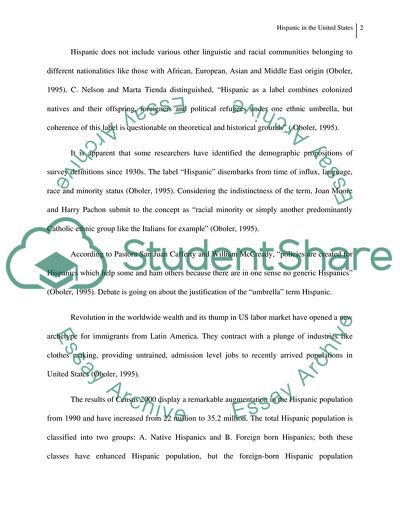Hispanic in the United States Essay Example | Topics and Well Written Essays - 1000 words. https://studentshare.org/culture/1740976-hispanic-in-the-united-states
Hispanic in the United States Essay Example | Topics and Well Written Essays - 1000 Words. https://studentshare.org/culture/1740976-hispanic-in-the-united-states.


